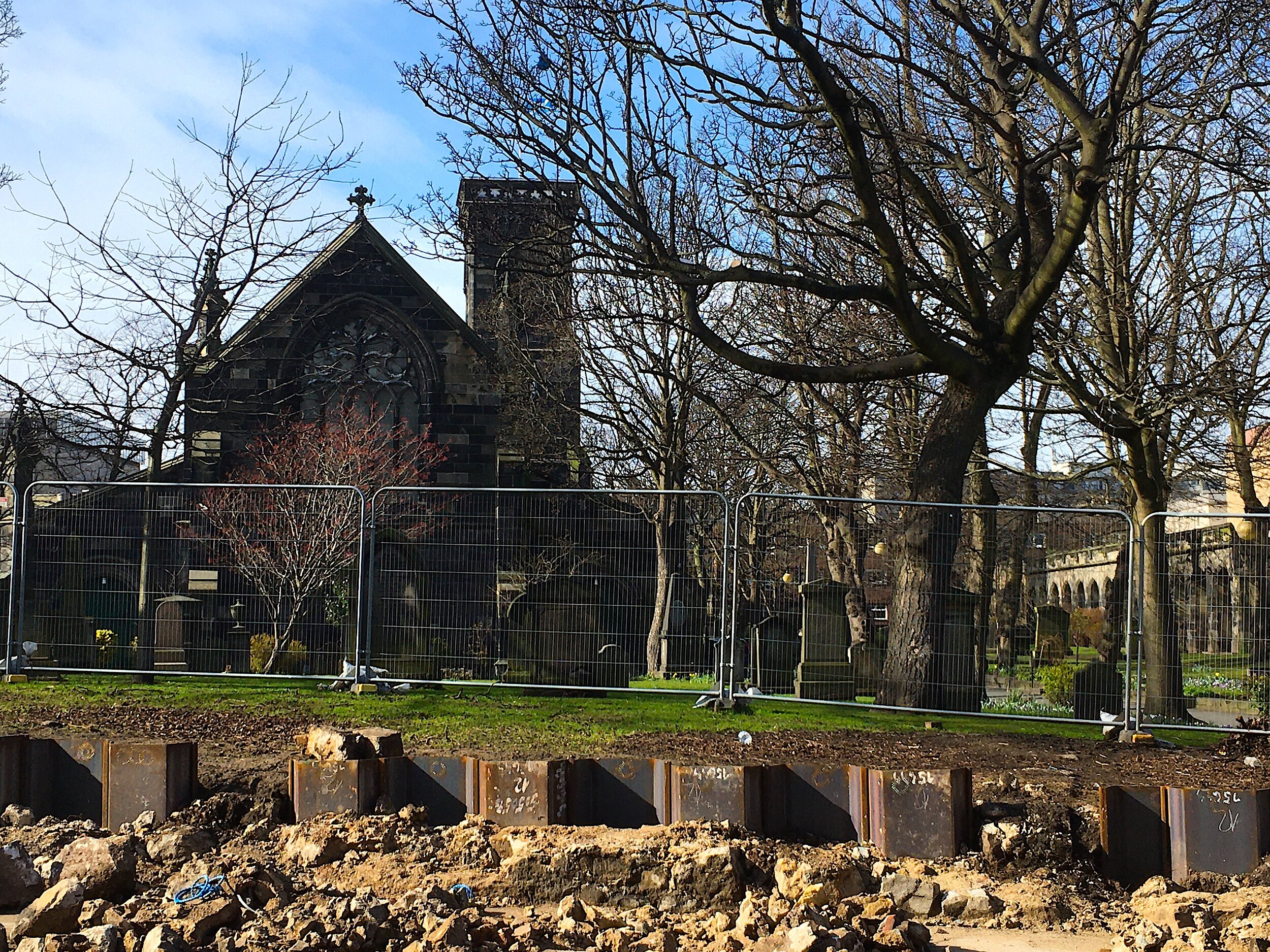Day 16
Constitution Street Trams
Gavin Booth, transport author/historian and a member of South Leith Parish Church recalls the problems at Pilrig due to electric trams in 1905.
At the east end of the churchyard of South Leith Parish Church they are preparing for the new trams that will pass down Constitution Street when the tramway is opened between Picardy Place and Newhaven. The works have uncovered skeletons and other archaeological remains from the days before Constitution Street existed, when the graveyard stretched eastwards towards Leith Links.
It won’t be the first time electric trams have passed down Constitution Street. That was in 1905 when Leith Corporation opened its new tramway that served much of the then-separate burgh. Trams along the waterfront from Newhaven and later Granton passed along Lindsay Road, Commercial Street and the town’s business centre at Bernard Street and then through Constitution Street to the busy junction at the Foot of Leith Walk; there they were joined by trams from Duke Street and Great Junction Street to head up Leith Walk to the boundary with Edinburgh at Pilrig, where some services turned right and headed down Pilrig Street towards Stanley Road and Granton.
If you were a Leither travelling to the centre of Edinburgh, Pilrig was as far as the Leith trams would take you. Leith Corporation had sensibly decided that electric trams were the future, while Edinburgh had invested in the cable car system, which meant that no trams could cross the boundary because the two systems were completely incompatible. This was widely known at the time as ‘The Pilrig Muddle’. Late in the 19th century Edinburgh had decided that cable trams were the answer, partly because of the hilly nature of the city. But within a few years new-fangled electric trams came along and virtually every town and city in Britain adopted these.
The cable system involved constantly moving cables under the roadway with a slot in the middle of the tram track where the driver controlled a gripper under his tram that gripped the cable when the car was progressing; to stop the car he released the gripper and applied the brake. It was not a great system – when a cable broke, and they frequently did, every tram on that route came to a halt until repairs could be made. Passengers for Edinburgh who had travelled to Pilrig on a Leith electric tram had to change to an Edinburgh cable tram – or perhaps walk if there was a cable breakage.
The reluctant annexation of Leith into Edinburgh in 1920 coincided with Edinburgh’s decision to abandon the cable cars and convert to electric trams and this process was started with a through service from Leith to Liberton in June 1922. The last cable car ran in Edinburgh just a year later.
The Edinburgh Corporation electric trams continued to serve Constitution Street until June 1956 and few people at that time imagined that a very different breed of tram might return to the street more than 60 years later.








